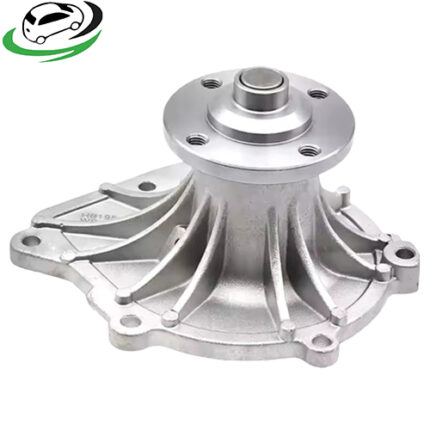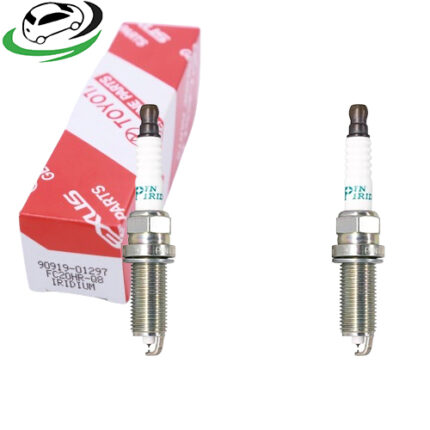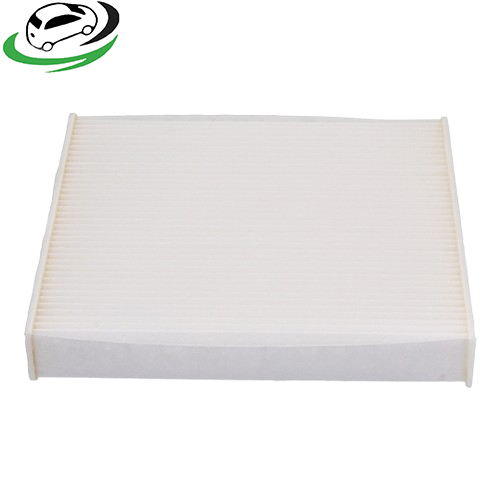-7%
Get Toyota Various Cabin Filter (Air Con) 87139YZZ25
A Cabin Filter (Air Con) is an essential component in modern vehicles, contributing to air quality and passenger comfort. It filters the air that enters the cabin through the heating, ventilation, and air conditioning (HVAC) system, removing pollutants, allergens, and particles. This function not only improves the air quality but also protects passengers from harmful airborne contaminants.
1. Purpose and Function of a Cabin Filter
The cabin filter’s primary function is to filter air entering the passenger compartment. It’s designed to trap various contaminants such as dust, pollen, smog, and even odors. As outdoor air flows through the HVAC system, the filter prevents these particles from entering the cabin. Some cabin filters, particularly higher-quality or premium filters, may also include activated carbon to filter out odors and harmful gases.
Cabin filters are particularly valuable for individuals with allergies, asthma, or respiratory conditions as they reduce exposure to allergens like pollen, mold spores, and other particles that may trigger reactions. They also help improve comfort during driving by ensuring a clean, fresh-smelling environment.
2. Types of Cabin Filters
There are several types of cabin filters, each offering different levels of filtration:
- Particulate Filters: These are basic cabin filters that trap solid particles such as dust, pollen, and other small particulates. They’re effective for general use and are commonly found in many vehicles.
- Activated Carbon Filters: In addition to filtering out solid particles, these filters include a layer of activated carbon to capture harmful gases, odors, and pollutants like exhaust fumes. This type of filter is particularly beneficial for urban drivers exposed to heavy traffic pollution.
- Electrostatic Filters: These filters use an electrostatic charge to attract and hold particles. They can be more effective in capturing fine particles and allergens and are often used in premium cabin filter models.
- HEPA Filters (High-Efficiency Particulate Air): Although not commonly used in all vehicles due to their higher cost, HEPA filters can trap particles as small as 0.3 microns, including bacteria and viruses. They’re particularly beneficial for people with severe respiratory sensitivities.
3. Benefits of a Cabin Filter
Investing in a quality cabin filter offers numerous benefits for health, comfort, and even vehicle performance:
- Improved Air Quality: By removing dust, pollen, mold, and other allergens, the cabin filter significantly improves air quality within the vehicle, creating a safer and healthier environment.
- Reduced Allergies and Respiratory Issues: For individuals with allergies, asthma, or respiratory conditions, a high-quality cabin filter can reduce the severity of symptoms by limiting exposure to allergens.
- Enhanced HVAC Efficiency: A clean cabin filter ensures that the HVAC system can operate efficiently. A clogged filter restricts airflow, causing the HVAC system to work harder, which may lead to reduced performance and increased energy consumption.
- Elimination of Odors: Activated carbon filters are effective at removing odors from pollutants and external exhaust fumes, improving the driving experience and providing a more pleasant environment.
- Protection for HVAC System Components: Cabin filters also protect the HVAC system’s components by preventing dust and debris from accumulating on internal components, which could lead to premature wear and costly repairs.
4. Signs of a Clogged or Failing Cabin Filter
Over time, cabin filters become clogged with trapped particles and need replacement. Here are some common indicators of a clogged or ineffective cabin filter:
- Reduced Airflow: A restricted flow of air through the vents, even when the blower is on high, is often due to a clogged filter.
- Unpleasant Odors: If you notice musty or unpleasant odors in the cabin, it could indicate that the filter is saturated and unable to remove external odors or pollutants.
- Increased Allergy Symptoms: If passengers are experiencing worsening allergy symptoms while in the car, the filter may no longer be effectively trapping allergens.
- Foggy Windows: A clogged filter can affect the defrosting system, leading to foggy or steamy windows that take longer to clear.
5. How Often to Replace a Cabin Filter
The replacement interval for cabin filters varies depending on factors like driving conditions, climate, and the type of filter used. Typically, manufacturers recommend replacing cabin filters every 12,000 to 15,000 miles or at least once a year. However, for vehicles operating in dusty or high-traffic urban areas, more frequent replacement might be necessary.
Extreme driving conditions, such as desert climates or areas with high pollen counts, can also lead to faster filter clogging. Regular inspections are useful to determine if a replacement is required before the recommended interval.
6. How to Replace a Cabin Filter
Replacing a cabin filter is generally a straightforward task that can often be done by the vehicle owner. Here’s a basic guide:
- Locate the Cabin Filter: Most cabin filters are located behind the glove box, under the dashboard, or near the firewall. Consult the owner’s manual to locate the filter in your vehicle.
- Access the Filter: If the filter is behind the glove box, you may need to remove the glove box by releasing clips or screws.
- Remove the Old Filter: Once you have access to the filter compartment, slide out the old filter carefully to avoid scattering dust and debris.
- Install the New Filter: Insert the new filter in the correct orientation. Filters often have arrows indicating the direction of airflow, which should match the airflow direction in the HVAC system.
- Reassemble: After replacing the filter, reassemble the glove box or compartment and test the HVAC system to ensure proper airflow.
7. Choosing the Right Cabin Filter
Selecting the right cabin filter involves considering several factors:
- Compatibility: Ensure the filter is compatible with your vehicle’s make and model. An incompatible filter may not fit correctly or provide the proper airflow.
- Filter Type: Depending on your driving environment and health requirements, you may choose a basic particulate filter, an activated carbon filter, or a more advanced HEPA filter.
- Quality and Brand: Investing in a reputable brand ensures reliable filtration performance and durability. High-quality filters often last longer and offer better filtration than budget alternatives.
- Frequency of Use: If you drive frequently or live in a polluted area, consider a filter with a higher capacity for holding contaminants.
8. Environmental and Cost Considerations
When replacing cabin filters, it’s essential to consider the environmental impact of disposal. Some filters contain materials that are not biodegradable, and improper disposal can contribute to environmental pollution. Many auto parts retailers and service centers offer recycling programs for used filters, which can help mitigate this impact.
In terms of cost, cabin filters vary depending on the type and quality. Basic particulate filters are generally the most affordable, while activated carbon and HEPA filters are more expensive due to their advanced filtration capabilities. However, the investment in a higher-quality filter can be worthwhile if you prioritize air quality or have specific health needs.
9. Common Myths and Misconceptions
There are some misconceptions about cabin filters:
- Myth: Cabin Filters Are Unnecessary in Mild Climates: Cabin filters are essential regardless of the climate, as they filter airborne particles and allergens present in all environments.
- Myth: All Cabin Filters Are the Same: Filters vary significantly in filtration effectiveness. HEPA and activated carbon filters, for instance, offer superior filtration compared to basic particulate filters.
- Myth: Cabin Filters Only Affect Air Quality: Cabin filters impact the HVAC system’s performance and energy efficiency. A clogged filter forces the system to work harder, which can reduce fuel economy and cause HVAC components to wear out prematurely.
Conclusion
A Cabin Filter (Air Con) is a small yet significant part of a vehicle’s air conditioning system, providing cleaner air, improving passenger comfort, and supporting HVAC efficiency. Selecting the right filter and replacing it regularly ensures a healthier cabin environment, enhances HVAC performance, and prevents unnecessary strain on the system. By understanding the types, benefits, and maintenance requirements of cabin filters, drivers can make informed choices that contribute to both personal health and vehicle longevity.
Follow us on Facebook for more parts.




Reviews
Clear filtersThere are no reviews yet.